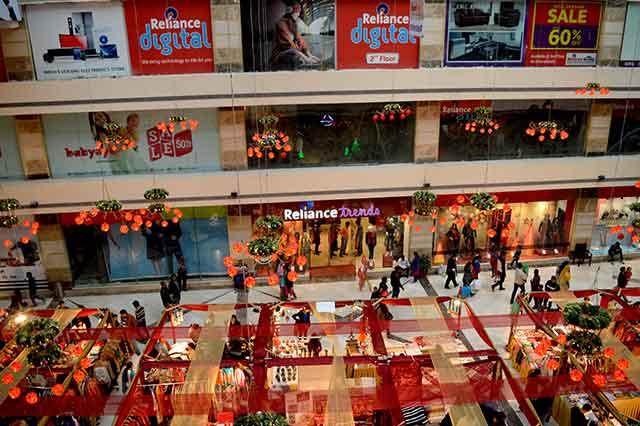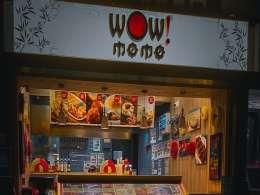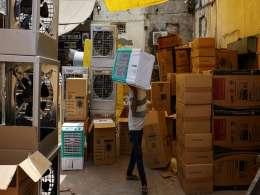The year gone by was all about regaining consumer confidence, albeit partially, as indicated by improvement in some lead indicators such as car sales and air passenger traffic growth in India. But an overall pick-up in consumer sentiment is far from evident given the not-so-bright sales of white goods, a lack of revival in the housing market, and poor demand for motorcycles and mass-end fast moving consumer goods (FMCG).
Softening of inflation and lower borrowing rates have lifted the spirits of urban consumers but much of the pain lies in rural demand, which has been hit in the last two years due to erratic rains that hurt harvest and income. This is most apparent as car sales 10 per cent in 2015 responding to the cut in lending rates, according to auto industry body SIAM. However, bike sales -- an indicator of rural demand -- continued to languish well into the fag end of the year.
Pinakiranjan Mishra, partner and national leader of retail and consumer products practice at consultancy firm EY (formerly Ernst & Young), says rural consumption, which accounts for around 40 per cent of total demand and was growing 50-80 per cent faster than that in urban India, has significantly slowed down.
“Rural demand is growing almost in line with urban demand now,†he said, attributing it to two consecutive years of poor rainfall and lower minimum purchase price of crops paid by the government.
At the same time, there are two big factors that could mean good times returning for those in the business of consumer goods and services this year.
On the one hand, a big fillip to consumer goods sales is expected from the new pay commission report, which suggested a wage hike for millions of government employees. The other, and more important, factor is the prospect for a normal monsoon that could push agricultural income higher.
“We don’t expect any significant uplift in FMCG growth unless the GST gets implemented,†said Vivek Gambhir, MD, Godrej Consumer Products
The weather disturbance through El Nino was seen as a dampener but the India Meteorological Department has said it would at best delay the monsoon this summer. The monsoon, which engulfs much of the country in the middle of every year, is crucial for rain-fed irrigation. There was a scare at the start of the year with delayed onset of seasonal chill and its impact on the winter crop. But that has partly been taken care of with the change in weather in the past week.
While the final picture on rainfall and rural demand will be clear six months down the line, most industry stakeholders are optimistic about the revival of rural consumer sentiment.
EY's Mishra, however, says consumption recovery is likely to be gradual. “The recovery would be primarily driven by urban demand. Urban consumers are optimistic about the recovery in demand over the medium term, but they are not spending in proportion to the optimism and are instead saving more for the future,†said Mishra.
In contrast, rural consumption is likely to stay muted during 2016, he argues. If the monsoon is normal it could lead to improved rural consumption during the last couple of months of the year.
Here are some factors to watch out for in terms of consumer products and services sub-sectors and what do those engaged in these businesses think about this year.
FMCG
The jury is still out on how fast is the FMCG sector growing with some industry surveys showing revival even though industry captains question the data. They say the volume growth is driven by price cuts to push sales last year.
Prospects of a better year for agriculture means that people may start opening their purse strings. But not everyone is so optimistic and suggest that the delay in implementation of the goods and service tax (GST), which would make supply chains more efficient and lower taxes to drive sales, is a spoilsport.
“We don’t expect any significant uplift in FMCG growth unless the GST gets implemented,†said Vivek Gambhir, managing director at Godrej Consumer Products Ltd. “If the GST doesn’t get implemented in 2016, we expect only a modest recovery in FMCG growth. This growth will also be largely volume driven; given relatively lower raw material costs, we do not expect significant price-led growth.â€
The sector will also see global beverages giant Coca-Cola entering the dairy sector this year with the launch of two value-added drinks under the Vio brand. Hemendra Mathur, managing director at consumer and farm-focused PE firm SEAF India Investment Advisors, said that Coke’s entry is unlikely to impact the market share of other dairy companies in the value-added segment. “In fact, it can impact the share of carbonated drinks as consumers are looking for healthy options in beverages,†he said.
Mathur also said that 2016 will be a good year for dairy startups including processing, cattle farming and animal feed companies as demand for good-quality milk as well as value-added products is growing at a healthy pace of 15 per cent a year.
Retail
The sector was abuzz with consolidation activity last year with Future Retail and Bharti Retail joining hands while business groups such as Mahindra, Godrej and Goenka, which run offline retail chains, took to the online world by snapping e-commerce startups BabyOye, EkStop and Meragrocer, respectively. Much of these are still works in progress as far as integration is concerned and this year may prove to be significant to filter out the winners from the side players.
Future Group's moves would be keenly watched on how it transforms itself, if at all, to take on market leader Reliance Retail. Surely, both of them would need to keep an even closer eye on not losing out to the fast growing e-commerce majors, especially as some of them already claim to be almost as big, if not bigger, than Reliance Retail.
Other retail chains see a middle way by championing an omni-channel strategy where a retailer sells products both offline and online. Recently, Landmark Group, the Dubai-based retail conglomerate which owns Lifestyle and Max chains, launched its India-specific e-commerce website landmarkshops.in. “We are looking to expand the market of these brands by making them accessible to customers across the country, including the cities where these brands have yet not established a physical presence,†said Kabir Lumba, managing director at Lifestyle International Pvt Ltd.
The big push by international retailers into India is unlikely because of the limited opening of the sector and the ruling government not too keen on foreign competition on that front as an ideology.
Services
Within the larger canvas of consumer services, the highly fragmented education sector is on the verge of a significant consolidation with the proposed merger of the country's top two pre-school chain operators Tree House Education & Accessories and Zee Learn Ltd, the education arm of media baron Subhash Chandra’s Essel Group.
This deal, which is likely to face a close scrutiny by the Competition Commission of India, is not the only one brewing. In another development, the UK's publishing and education services major Pearson is in talks to expand its footprint in the country.
Fast-growing leisure consumer services such as salon chains and gyms, being largely an urban phenomena, are expected to continue to ride along given the positive urban consumption sentiment.
EY's Mishra said urban demand is likely to go a notch higher in 2016 on the back of higher GDP growth, manageable inflation, the proposed wage hike by the seventh pay commission, gradual transmission of past rate cuts and more rate cuts by the Reserve Bank of India.






